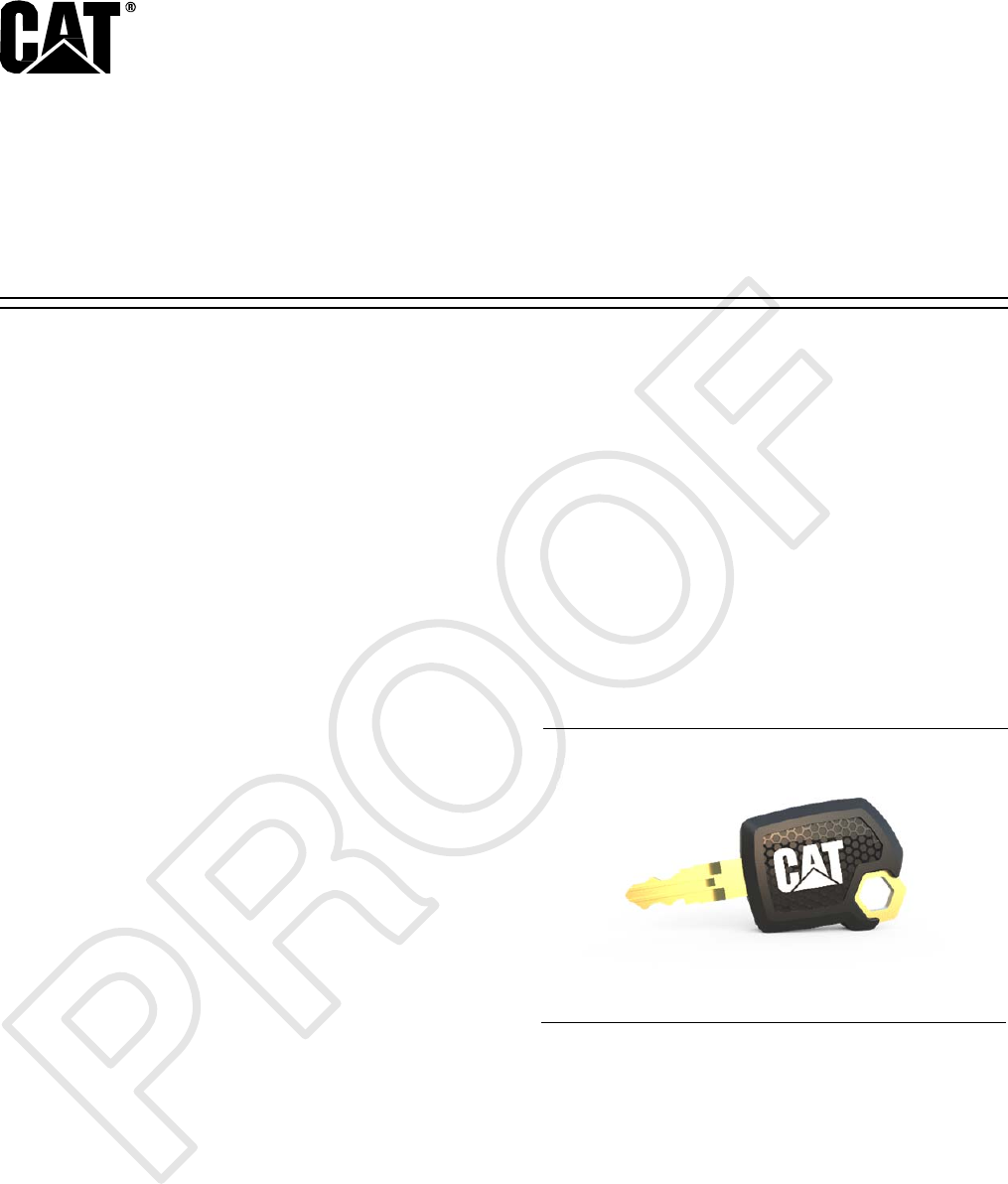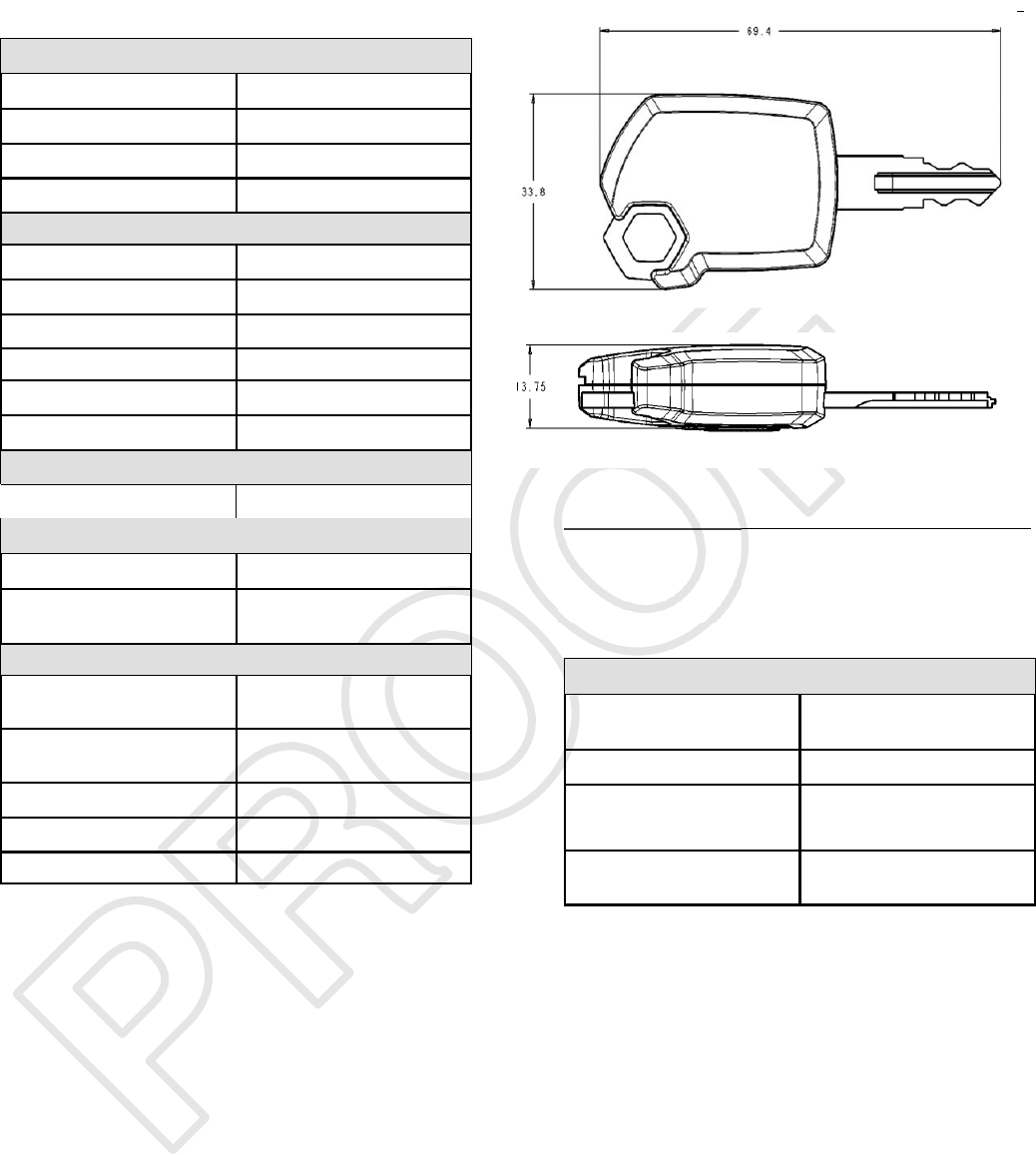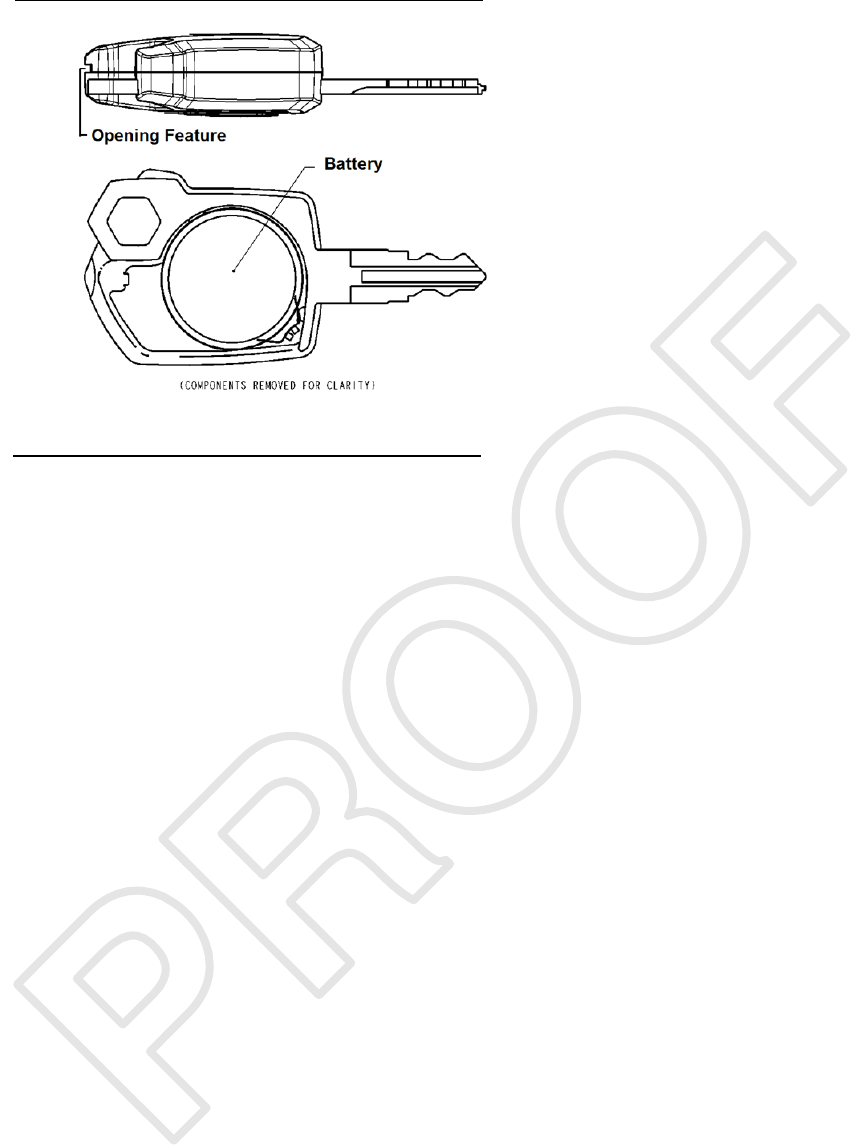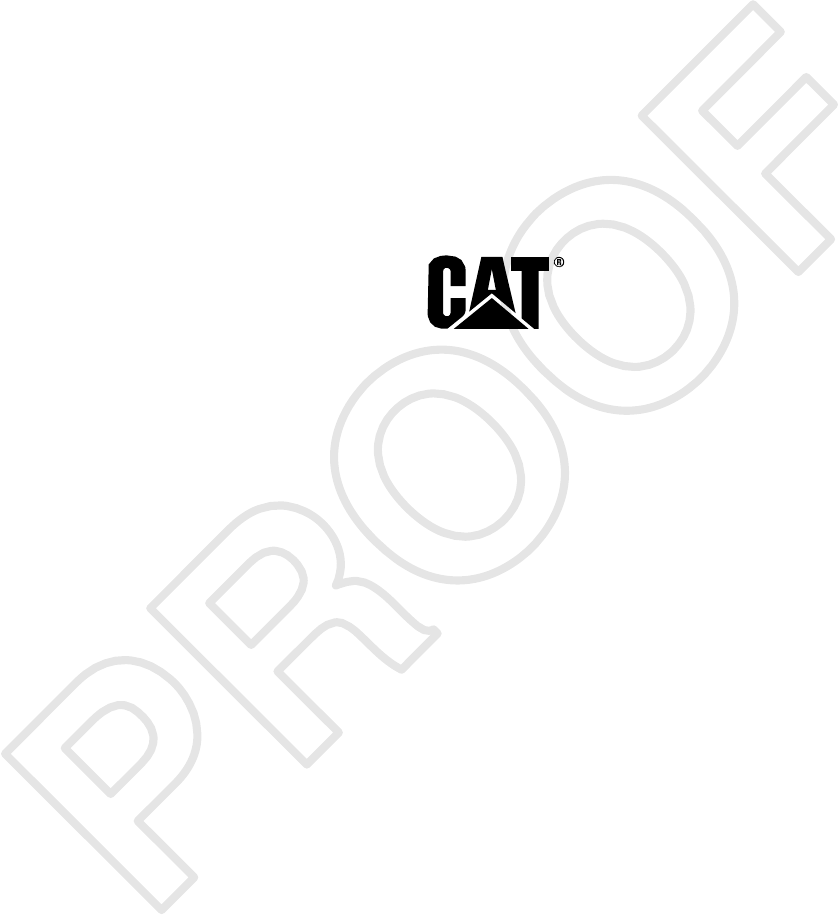Caterpillar A1S1 Caterpillar CATBTFOB User Manual Exhibit D Users Manual per 2 1033 b3
Caterpillar, Inc. Caterpillar CATBTFOB Exhibit D Users Manual per 2 1033 b3
Exhibit D Users Manual per 2 1033 b3

1
15 September 2016
Special Instruction
Installation Guidelines for the
Cat ® Bluetooth Fob
SMCS Code:
Table of Contents
Introduction ..................................................................... 1
FCC Notice ...................................................................... 1
Industry Canada Notice to Users ................................. 1
Cat Bluetooth Fob Overview ........................................ 1
Specifications .................................................................. 2
Technical Specifications ............................................ 2
Enclosure Dimensions ............................................... 2
Physical Specifications .............................................. 3
Battery ............................................................................ 3
Battery Replacement Guidelines ............................. 3
Handling and Radio Frequency
Guidelines ............ 3
Safety Hazard Warnings and Disposal for
Manganese Dioxide Lithium Batteries .................. 3
Introduction
This Special Instruction covers the installation
guidelines for the Cat
®
Bluetooth FOB (Cat BTFOB).
Do not perform any procedure in this
Special
Instruction until you have read the information
and
you understand the information.
FCC Notice
This device complies with part 15 of the FCC rules.
Operation is subject to the following two conditions:
1. This device may not cause harmful interference,
and 2. This device must accept any interference
received, including interference that may cause
undesired operation.
Industry Canada Notice to Users
This device complies with Industry Canada license-
exempt RSS standard(s). Operation is subject to the
following two conditions:
1. This device may not cause interference, and 2.
This device must accept any interference received,
including interference that may cause undesired
operation of the device.
Cat Bluetooth FOB
Overview
Illustration 1
The CAT Bluetooth Fob uses Bluetooth Low Energy
technology to enable Operator Identification upon entry
into a machine cab. The CAT Key Fob periodically
transmits Bluetooth packets with unique identifier
information when activated by motion. The packets are
picked up by a receiving device on the machine and are
then sent over to a Machine Control ECM, enabling
Operator Identification or Machine System Security.

2
Technical Specifications
Table 1
Illustration 2
Table 2
Specifications
Enclosure Dimensions (mm)
Input Voltage
Battery Coin Cell CR2450
Battery Chemistry Manganese Dioxide Lithium
Battery Manufacturer Panasonic
Battery Nominal Voltage 3V
Bluetooth Communication
Transmit Frequency 2.400 GHz to 2.480 GHz
Transmit Output Power (max) 0 dBM (1 mW)
Antenna PCB Trace - Monopole
Antenna Pattern Omnidirectional
Antenna Linear Average Gain -1 dBi
Antenna Peak Gain 2.7dBi
Passive RFID Transponder (Read Only)
Global Compliance ISO/IEC 11784 and 11785
Current Consumption (max)
Sleep Mode 5µA
Max Average
Current
1mA
Environment
Operating Temperature −30° C (−22° F) to 60° C
(140° F)
Storage Temperature (battery
removed)
−50° C (−58° F) to 85° C
(185° F)
Sealing IP67
Humidity 90% RH
Vibration 4.41 Grms
Physical Specifications
Enclosure Material
PPE+PA
Material Flammability Rating UL-94 HB @ 1.5mm
Dimensions (LxWxH) 69.4 mm ( 2.73 inch) x 33.8 mm
(1.33 inch) x 13.75 mm (0.54
inch)
Opening feature Coin-sized slot for prying open
the two-piece housing

3
Battery
Illustration 3
Battery Replacement Guidelines
Opening the Enclosure
Find the opening feature on the housing by locating
the slot in the housing next to the hex-shaped metal
key ring
Use a coin to assist with the opening of the two-piece
housing. Once loosened, pull apart one side of the
housing from the other to expose the battery.
Note: The slot is designed for a coin the size of a
U.S. dime or penny.
After the battery is fully exposed, remove the battery
by hand and dispose of in accordance with all
applicable federal, state, and local regulations.
Replace the used battery with a new CR2450, align
the enclosures back together, and press together
the housing until it snaps together. Check that the
spacing is even on all sides of the housing.
Handling and Radio
Frequency
Guidelines
Ensure that the following guidelines are met when
handling the Cat BTFOB
•
After inserting the Cat BTFOB into the machine
door key slot or the ignition, do not apply more
than 0.82 N-m of force when turning the key
clockwise or counterclockwise inside of the key
slot.
•
For machines with key switch ignition, do not
remove the Cat BTFOB from the key switch
during machine operation. This ensures the
engine stays on as well as ensuring reliable
wireless transfer data from
the key fob to the
transceiver.
•
For machines with Push to Start capability, do
not move the Cat BTFOB more than 1 m
(3.3
ft) away from the key switch during machine
operation. This ensures reliable wireless
transfer of operator ID data from
the key fob to
the transceiver.
Note: The 1 m (3.3 ft) distance requirement is due to
the controlled range of the key fob.
•
Ensure that the radio frequency propagation is not
inhibited. Do not fully enclose the Cat BTFOB in
metal such as a metallic lunch box.
•
It is recommended to not keep the key in back
pants pocket while sitting in the cab.
Safety Hazard Warnings and Disposal
for Manganese Dioxide Lithium
Batteries
Ensure that the following guidelines are met when
handling the Cat BTFOB
• Do not crush, short, charge incinerate or
deform battery. Keep away from
children. Replacing batteries use only
CR2450 batteries complying EN60086-4 or
UL1642
• LiMnO2 batteries are not hazardous waste
per the United States Resource Conservation
and Recovery Act(RCRA) - 40 CFR Part 261
Subpart C. Dispose of in accordance with all
applicable federal, state and local regulations.
4
5

©2016 Caterpillar
All Rights Reserved CAT, CATERPILLAR, their respective logos, “Caterpillar Yellow”, and the POWER EDGE trade
dress as well as corporate and product identity used herein, are trademarks of Caterpillar and
may not be used without permission.
6
15 September 2016